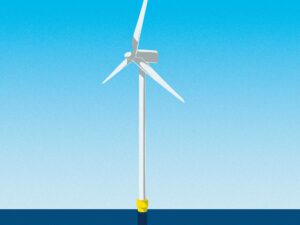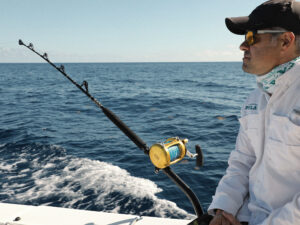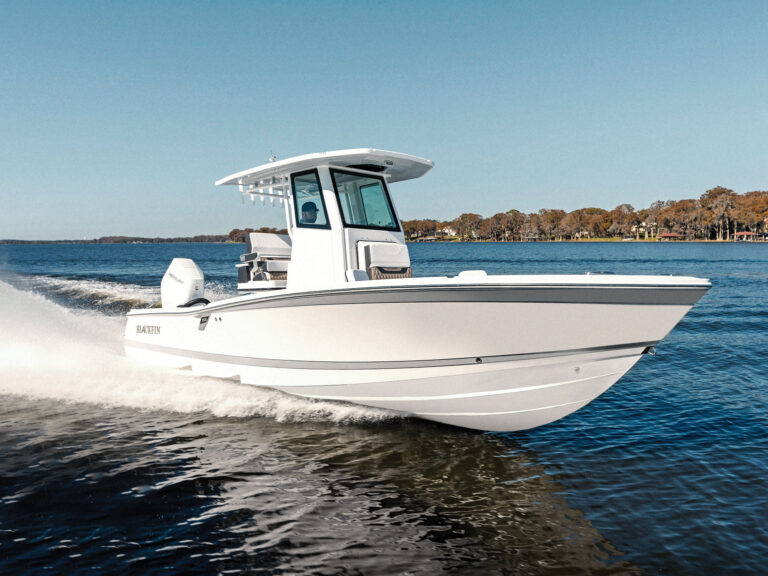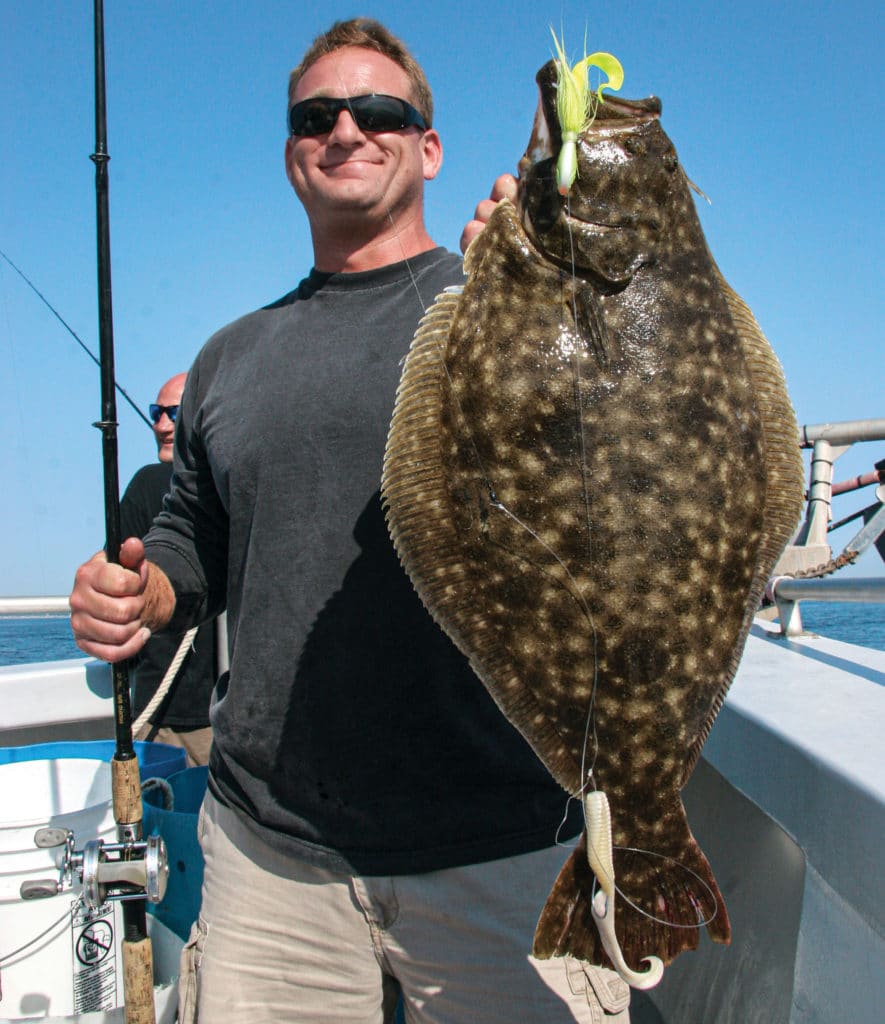
When you grow up in Jersey, you don’t think of flatfish as a southern target. But I spent a stint in Florida as managing editor of this magazine. Feeling a wreck-fishing whimsy, I put in a call to Capt. Glyn Austin of Going Coastal Charters to fish a secret spot off Cape Canaveral. We were searching for cobia or snapper, but I had a sneaking suspicion there might be other fare sticking to the bottom structure. Using my fluke instincts from the North, I dropped down a live bunker on a fish-finder rig with a 3-ounce egg sinker. Within an instant, I got whacked, put the reel in free-spool to allow the chew, then engaged and set the hook. A few minutes later, a whopping 7-pound southern flounder was flopping on deck, promptly followed by eight other flounder from 4 to 9 pounds! It left me pondering what other tactics can be crossed over to fool both summer and southern flounder species.
North Vs. South
Summer flounder (Paralichthys dentatus), known up north as fluke, and southern flounder (Paralichthys lethostigma) are not the same species. Capt. Jot Owens, of Jot It Down Charters, is a great guy to talk about the differences. He fishes out of North Carolina, where both fish are common because their northern and southern ranges overlap. “Here in North Carolina, summer flounder migrate inshore into bays in April and May. The southern flounder come a little bit later, in May and June. Both fish migrate offshore in September and October.”
In New Jersey, fluke fishing is best from late April through September. Farther north, on the east end of Long Island, off Nantucket and in Massachusetts waters, summer flounder seasons heat up a little later in May. Down in Florida, the seasons are different. “We don’t have summer flounder here, just southern flounder, and the prime time for them is from November through March,” Austin says.
While seasons vary from region to region, both species follow similar migration patterns, heading to backwaters early, then moving through the inlets and out to the ocean as the season wears on. And that bit of knowledge determines the game plan.
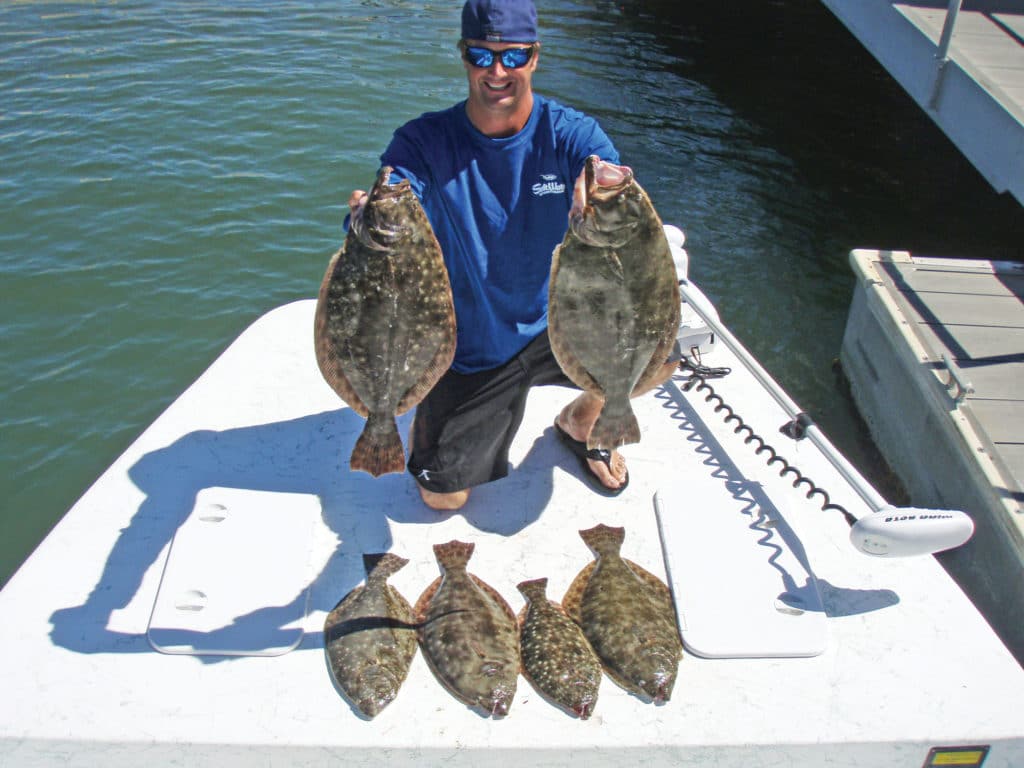
Bay Tactics
“I find southern flounder are bigger than summer flounder in North Carolina, with Cape Fear to Morehead City producing the largest,” Owens says. When running flounder charters, his first move is to target southern flounder inshore. “The biggest fluke and southern flounder hang in the inlets and the inshore estuaries. If our quest is to put up numbers and more keepers, we find more flatfish of 2 to 5 pounds of both species in the ocean.” Unlike up north, where we look for sandy flats and channel edges, Owens prefers working heavy bay structure around docks, oyster bars and rock piles.
His favorite bay offering is a light-tackle setup rigged with 30-pound braided line, an Albright knot to a 3-foot section of 40-pound fluorocarbon leader, then a 3/8-ounce long-shank Berkley Fusion 19 leadhead with a Berkley Gulp! Jerk Shad. In clear water, he prefers chartreuse-and-pepper or pearl-and-white colors. In chalky water, he’ll switch to orange-and-chartreuse color patterns like Firetiger. “Pitch to the creekmouths and target the deeper water on channel edges, then bounce around the rock piles,” Owens says.
Down in Florida, Austin finds flatties behind Sebastian Inlet inside the Indian River Lagoon. “November to January, the backwaters hold plenty of flounder, but they are smaller fish, so we target them with a ½-ounce jig head and strip of mullet or pinfish. When mullet run in fall, I fish the mangrove shorelines, pitching back into the shallows with soft baits. Spoil islands work too, as larger flounder lay up on the slopes. Some of the biggest of the season are caught this way.”
While there are no mangroves in New Jersey, bay anglers head to 4- to 6-foot-deep sand flats in the late spring, then focus on 10- to 18-foot-deep channels along the Intracoastal Waterway during the summer. The top setup for Northeast bay fluke is a 1/2-ounce white bucktail tipped with a Berkley Gulp! Swimming Mullet, with a white bucktail hair 3/0 teaser tied 18 inches above the bucktail.
I’ve always wondered why southern captains don’t use teasers because they account for 60 to 75 percent of the fluke I catch in the bays up north.
Structure Fishing
In the Northeast, come August and September, fluke migrate to the deeper waters and hang around structure in the ocean. Anglers fish depths from 50 to 100 feet and concentrate on submarine glacial rock fields and low-profile artificial reef structures such as army tanks, reef balls and rock rubble piles. Most people in New Jersey use 2- to 3-ounce Spro bucktails tipped with 8- to 10-inch strips of fluke belly, which they bounce between the structure piles.
Southern flounder also gravitate to offshore structure later in the season. “On ocean wrecks, we will anchor up and fish the sandy side, sitting off of it a little bit, dropping down live finger mullet or pogy,” Austin says. “It’s a soft bite, so you reel the hook slowly and steady to set it. Southern flounder will hang on the bait more than feeling a huge bump.” And deeper water attracts larger flounder. “Sometimes we’ll be fishing for tarpon on the 25-foot wrecks, bouncing soft baits like 10-inch Hogy eels off bottom, and we get whacked by flounder to 6 pounds.”
Owens has similar luck going big on the wrecks. “We’ll fish in 20 to 50 feet of water about 3 miles out and anchor outside of a low-relief wreck, pitching the baits about 50 feet away and bumping them back to the boat. I notice more summer flounder are out in the ocean and not as much in the backwaters.” Owens will up his offering to a 7-inch Berkley Gulp! Jerk Shad and a 1- to 2-ounce weight when fishing this deeper water. “Southern flounder do have an aggressive but clean bite, so they are more likely to suck it in. Once you feel the pressure, set the hook quickly.” This anchoring and pitching technique is more common down south. In the Northeast, we almost always drift for fluke, which helps us cover ground.
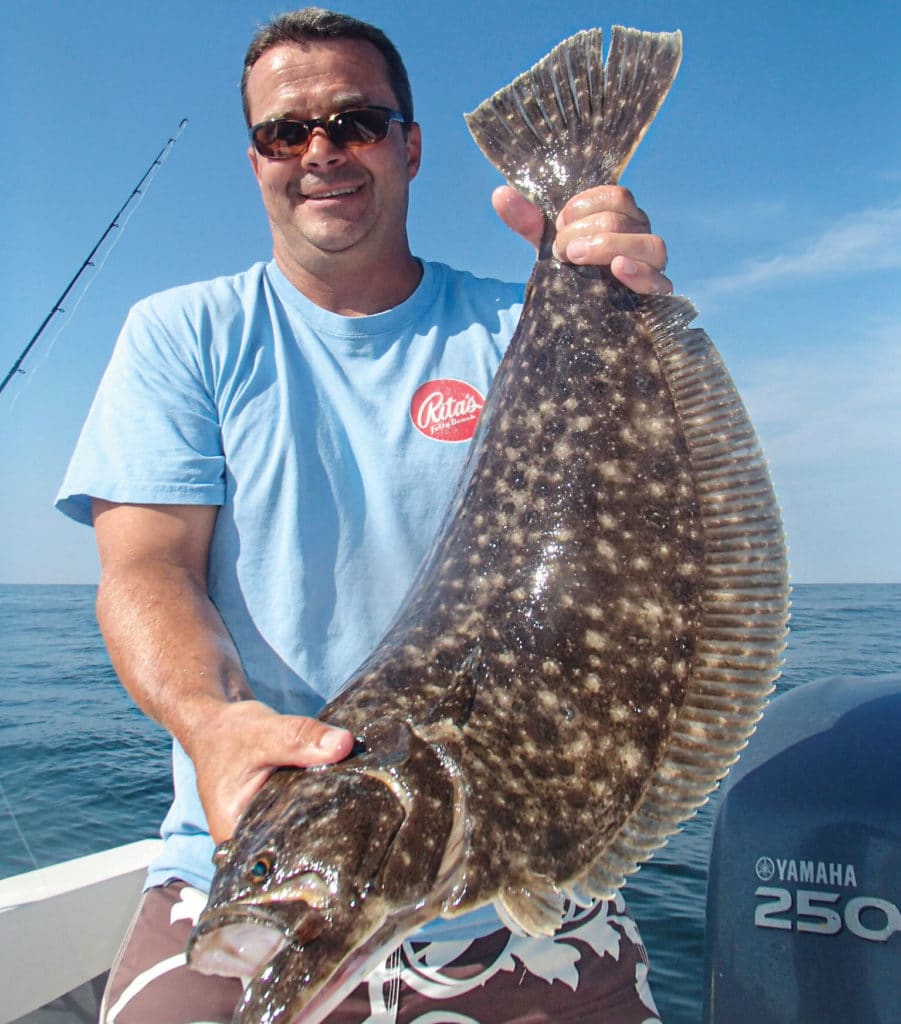
Inlets for Trophies
Whether summer or southern flounder is your target, the inlets often hold the largest flatfish. “Big fish are hanging in the inlets,” Austin says. “Fish around the tide changes. In Florida, we set up and wait for the flounder to move with the tide into our lane. When we find one fish, we usually find multiple fish in one area on the move. If we don’t get any hits after a bit, we will reanchor and try a new passage line.” Austin anchors inside, then goes with a live-bait setup consisting of 15-pound-test braided line, a 1- to 2-ounce egg sinker, a 100-pound barrel swivel with 24 inches of 20-pound fluorocarbon leader and a 3/0 circle hook. He likes to hook live mud minnows or pilchards through the lips, cast them out behind the boat, then set the rod in the rod holder and allow the bait to swim in the tide.
Owens has a more proactive approach to inlet fishing. “When we want to find a trophy summer or southern flounder, the rushing tides of the inlet always seem to hold them as baitfish get swirled around,” he says. “I bounce a 11/2-ounce bucktail tipped with a 6-inch Jerk Shad or a 4-inch Gulp! Shrimp using 50-pound fluorocarbon leader. If there are a lot of pinfish and other species nipping off expensive Gulp! baits, I’ll switch to a 1/2-ounce jig head with a 5 1/2-inch Berkley Power Bait Grass Pig.” This is the lure he used to land a 14-pound southern flounder that measured 31 ¼-by-24 ½ inches last June.
Read Next: Best Lures to Catch Flounder
The Takeaway
While both species will lay up in the backwaters in the early season, then progressively migrate out the inlets and offshore as the season wears on, adjust your tactics to target these unique species. Anglers down south seem to anchor and pitch back to trick fish, while northern anglers drift to cover ground to find fish. Teasers are nearly a necessity for northern flukesters and are nowhere to be seen on rigs down south. Whichever species of flounder you target, be sure to hold bottom and bring your regional knowledge of flatfish when entering a new arena. You might be surprised by your success.

Eye Spots the Difference
There are plenty of differences between southern and summer founder, but the easiest way to tell them apart is to look at their spots. Southern flounder have a lot of smaller spots scattered randomly about the body. A fluke’s spots are ocellated, more organized and feature larger eye spots.
SWS Planner: Summer Flounder, Southern Flounder
- Where: Massachusetts to Florida
- When: Year-round
- Who: A good captain makes all the difference. These great guides will put you on the meat:
- Capt. Glyn Austin, Going Coastal Charters, Sebastian Inlet, Florida, goingcoastalcharters.com, 321-863-8085
- Capt. Jerry Postorino, Fishmonger, Point Pleasant, New Jersey, fishmongercharters.com, 732-403-6056
- Capt. Jot Owens, Jot It Down Charters, Wrightsville Beach, North Carolina, captainjot.com, 910-233-4139
SWS Tackle Box
- Rods: 6 1⁄2– to 7-foot Shimano Teramar, St. Croix Mojo spinning rods
- Lures: 1⁄2– to 3-ounce Spro or Andrus bucktails; Berkley Gulp! 3- to 6-inch Swimming Mullet, Shrimp and Jerk Shad
- Line: 15- to 30-pound Power Pro braid, 25- to 40-pound Seaguar fluorocarbon leader
- Reels: Shimano Stradic 5000

